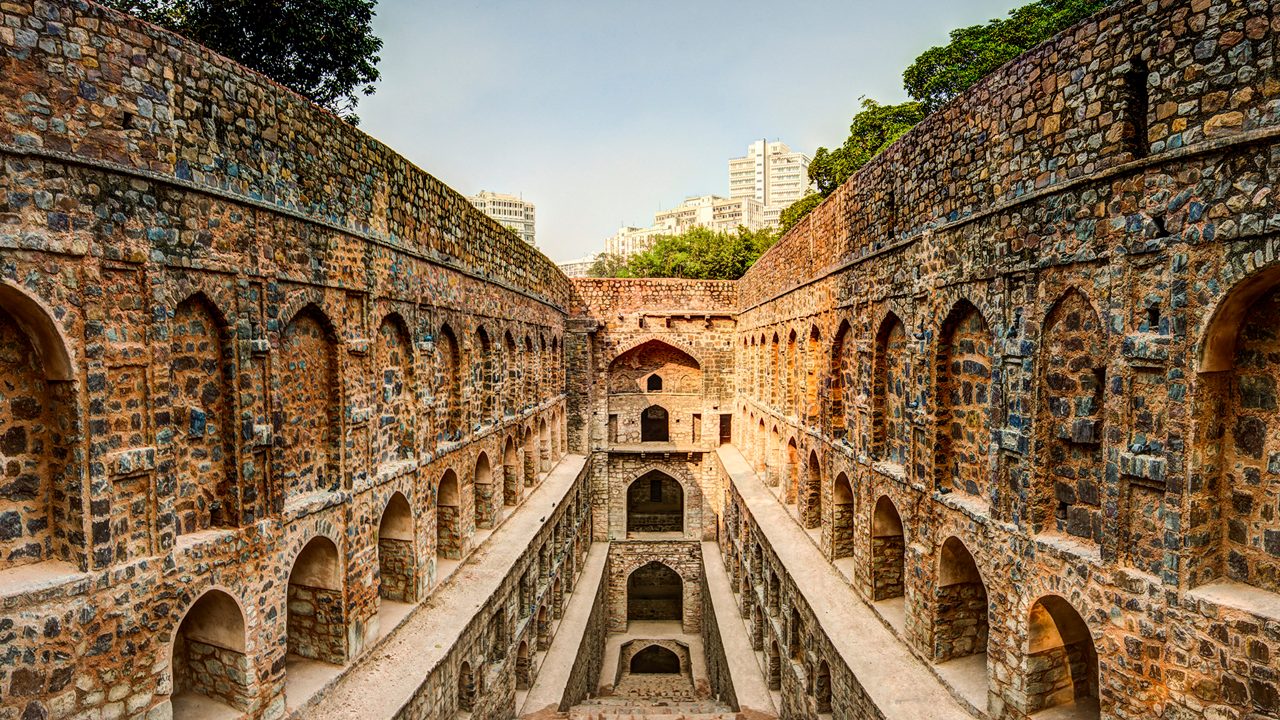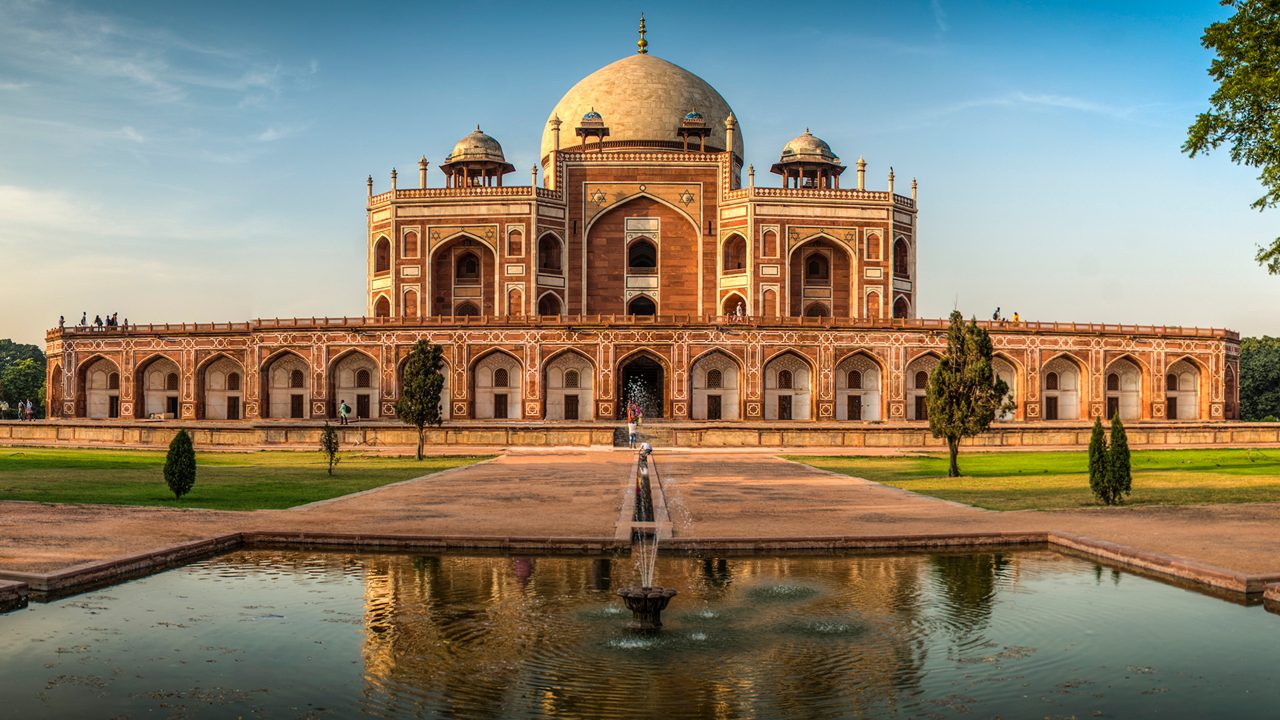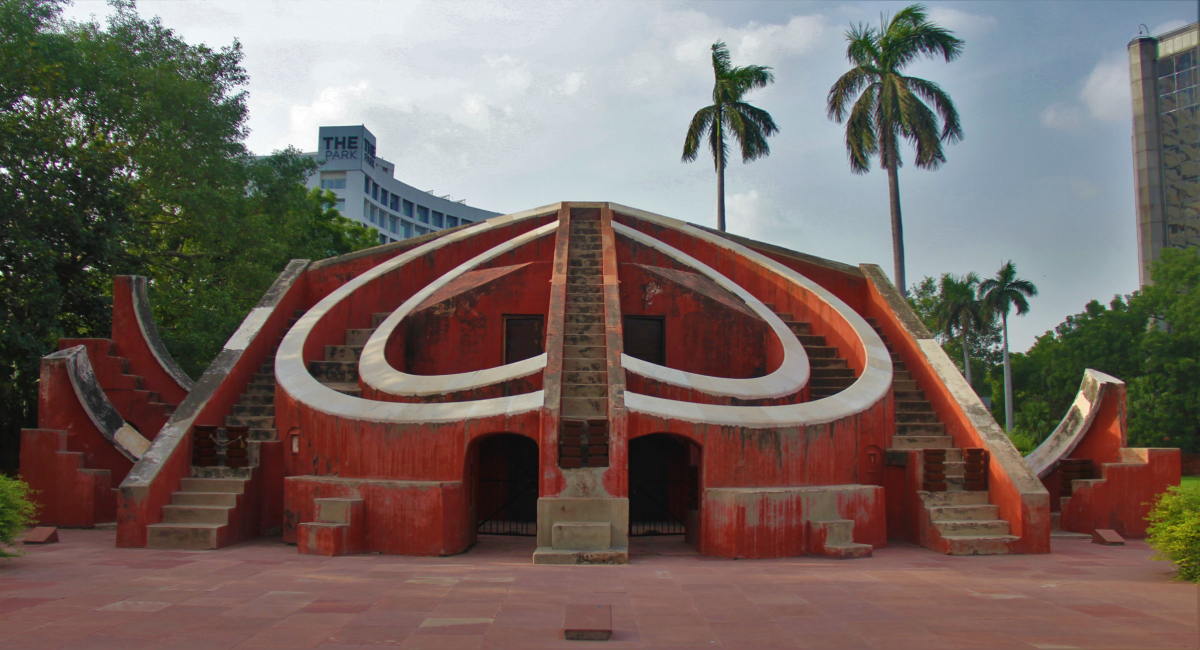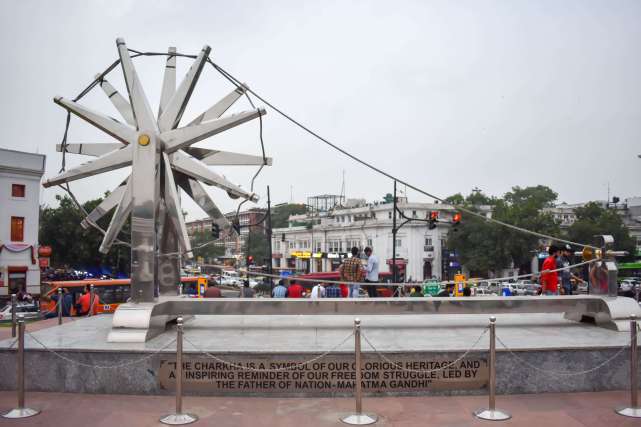Delhi is a city where ancient and modern blend seamlessly together. It is a place that not only touches your pulse but even fastens it to a frenetic speed. Home to millions of dreams, the city takes on unprecedented responsibilities of realizing dreams bringing people closer and inspiring their thoughts. It explores the wonders of Delhi, its heritage, the art and craft, the diverse cuisine and culture.
Delhi a Thriving, Cosmopolitan Metro, the City has much to Celebrate as it has already Reached the Milestone of Completing 100 Years as a Capital. Explore Culture, Heritage and Sprituality near Delhi

Red Fort
The Red sandstone walls of the massive Red Fort (Lal Qila) rise 33-m above the clamour of Old Delhi as a reminder of the magnificent power and pomp of the Mughal emperors. The walls, built in 1638, were designed to keep out invaders, now they mainly keep out the noise and confusion of the city. The main gate, Lahore Gate, is one of the emotional and symbolic focal points of the modern Indian nation and attracts a major crowd on each Independence Day.
Agrasen ki Baoli
Agrasen ki Baoli, a major tourist attraction in Delhi, is protected by The Archaeological Survey of India. The structure is believed to have been built sometime during the Mahabharata era. The baoli is an ancient water reservoir that stands 60 mts. long and 15 mts. wide with an assorted mosaic of 103 step stones. Its serene environment attracts many tourists and photographers. Hidden within the alleys of Central Delhi, the baoli's unique design makes it perfect for the Instagram capture titled, 'Exploring India'.


Laxmi Narayan Temple
Laxmi Narayan Temple, also known as Birla Mandir, is one of Delhi's major temples and a major tourist attraction. Built by the industrialst Sh. J.K. Birla in 1939, this beautiful temple is located in the west of Connaught Place. Birla MandirThe temple is dedicated to Laxmi (the goddess of prosperity) and Narayana (The preserver). The temple was inaugurated by Mahatma Gandhi on the condition that people of all castes will be allowed to enter the temple
Gurdwara Bangla Sahib
Gurdwara Bangla Sahib is one of the most prominent Sikh gurdwaras, or Sikh house of worship, in Delhi, India, and known for its association with the eighth Sikh Guru, Guru Har Krishan, as well as the holy pond inside its complex, known as the "Sarovar." It was rebuilt as a small shrine by Sikh General Sardar Baghel Singh in 1783. In the same year, there was reconstruction of nine Sikh shrines in Delhi. There were attempts of occupancy by Raja Jai Singh of Amer, during the reign of Mughal Emperor, Shah Alam II. It is situated near Connaught Place, New Delhi on Baba Kharak Singh Marg and it is instantly recognisable by its golden dome and tall flagpole.


The Humayun's Tomb
The Humayun's Tomb is a UNESCO World Heritage Site in Delhi Built for Mughal Emperor Humayun in the year 1570, itis the first grand dynastic garden mausoleum of the subcontinent. The tomb was constructed on the banks of the Yamuna river near the Nizamuddin Dargah. Spread across an area of 30 acres, it offers a panoramic view of the majestic Char Bagh - a Persian style garden with pools connected to intersecting water channel pathways. The unique octagonal shape of the monument makes it one of the finest examples of Mughal architecture. One of the best ways to reach this site is by availing the Delhi sightseeing tour service that also covers other famous locations like the Bahai Temple, Red Fort, Qutub Minar, etc
The India Gate
Situated in the heart of the city, the India Gate is one of the most popular and well-known monuments in India. It was designed by Edwin Lutyens, with its foundation laid in the year 1920. The 42 mts. high war memorial was unveiled in the year 1933 and is a tribute to the 70,000 British soldiers who lost their lives in various battles. Among the martyrs of World War |, the names of 13,500 soldiers are inscribed on the walls of this structure. Post independence, the India Gate became a site of 'Amar Jawan Jyoti' - Indian Army's Tomb of the Unknown Soldier. The running fountains and well-manicured lawns around the memorial make ita breathtaking place for a picnic as well as a family outing.


Jantar Mantar
Jantar Mantar (Yantra - instruments, mantra - formulae) was constructed in 1724. Maharaja Jai Singh of Jaipur who built this observatory went on to build other observatories in Ujjain , Varanasi and Mathura. Jai Singh had found the existing astronomical instruments too small to take correct measurements and so he built these larger and more accurate instruments
Qutub-Minar
Qutub-Minar in red and buff standstone is the highest tower in India. It has a diameter of 14.32 m at the base and about 2.75 m on the top with a height of 72.5 m. Qutubu'd-Din Aibak laid the foundation of Minar in AD 1199 for the use of the mu'azzin (crier) to give calls for prayer and raised the first storey, to which were added three more storeys by his successor and son-in-law, Shamsu'd-Din Iltutmish (AD 1211-36). All the storeys are surrounded by a projected balcony encircling the minar and supported by stone brackets, which are decorated with honey-comb design, more conspicuously in the first storey.


National Charkha Museum
National Charkha Museum Located in the heart of Connaught Place, the Charkha Museum is built on the Palika Bazaar garden, Inaugurated in May 2017, the museum is notable for featuring the world's largest chromium stainless steel spinning wheel (charkha) weighing 5 tonnes and measuring 26 ft. in length and 13 ft. in height. Apart from its huge size, it also possesses the extraordinary qualities of being non-magnetic, rust-resistant and impervious to heat.








